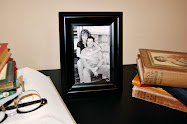Painting Wood Furniture
I have to start by stating the obvious. There are as many different paint products for finishing furniture as there are opinions on how it should be done. The process that I will walk you through is the process that most people are looking to do in their garage or patio and completed in just a day or two. While stripping, staining and refinishing are still options, they are messy, time consuming and more difficult.

Although your work space may be limited it is important to make it as well ventilated as possible by adding fans to blow fresh air through if necessary.
Gather all the tools you anticipate using such as sand paper, wood filler, putty knife, paint, paint conditioner, clear coat finish, paint brushes, mask, chocolate chip cookies (see our soon to come FAQ section for cookie recipe, but don't get distracted from your painting project), primer, paint, polyurethane, mixing sticks, newspaper or drop cloths, and cleaning products (bucket, sponge/rag, soap and water). Choose your paint beforehand and test on a piece of scrap wood. It is better to be surprised by the color well before you begin the painting process.
If you are considering new pulls or knobs you may need to plug holes and re-drill for new hardware. (this will also be included in our FAQ section coming soon!)

Prepare The Furniture
Thoroughly wipe down the piece of furniture with soap and water. The temptation is often to skip this step, especially if you know the piece and where it has been. The problems come with dark spots starts to appear through the primer or even form a bubble that will weaken the finish coat. These are often small remnants of oily food, wax, rust, or other impurities that were unknowingly splattered onto the surface. The soap and water will increase your chance of eliminating these spots.
Remove drawers from dressers, nightstands or hutches and clean them as well. Leave drawers to be painted outside the piece. Tables can be painted with or without the legs attached but clean up and down the legs. Clean all surfaces and parts that will be painted. If you will be painting a piece such as a china cabinet and you intend to paint the hinges you will need to wash and try those also.
After the furniture is clean and completely dry the surfaces will need to be sanded with 120-grit sandpaper. If the furniture has a high gloss finish you will either need to spend a bit more time sanding or use an 80 to 100-grit paper. This will give the surface some "teeth" to improve the bond between the primer and the old surface.

Primer Coat
Remember to always use primer in a well ventilated location. Brush the primer on the surface of the wood just as you wood paint. Brush well into any recesses and designs in the wood. After the entire piece is covered allow it to dry for several hours. The surface will now have a dry, chalky texture that will allow the paint to adhere.

Applying Paint
Wait at least a couple of hours between coats. Follow the manufacturer's guidelines. Stand the drawers upright and paint just the drawer fronts. This will give a smooth finish to the surface and in most cases prevent paint runs. Adding paint conditioner to the paint will smooth out some of the brush strokes and make it easier to brush on the paint. Sand between coats with 220-grit sandpaper to keep your surface smooth.

Protective Finish
After the final coat has dried (at least 12 to 24 hours) the protective finish can be applied. Once again, be sure that you have chosen the appropriate finish coat for your piece of furniture. You may need a polyurethane or lacquer finish, for example, on the horizontal surfaces of a dining set or coffee table. The entire piece of furniture can be coated in this finish but coast at least the table tops and items that need a more water resistant surface. Wait at least 24 hours between coats of polyurethane. Two coats are sufficient and three gives an even thicker glossier finish. If you are staying with the waterborne paint products you can also use the Minwax Polycrylic clear coat over all surfaces. This will provide a protective coating for the paint, prevent yellowing of light colors, and is especially helpful in filling any stray scratches in the paint if you sanded ares for a shabby chic style of finish. This process can also be applied to pressed wood furniture giving it a more elegant and renewed look.

Enjoy
Be sure to take a moment to stand back and enjoy your finished work. This is a required step at The Frosted Gardner and usually involves one or two more of those chocolate chip cookies. Allow about 15 to 20 minutes to complete this final step and wash it down with a glass of milk or diet coke (whatever your preference may be). Optional: invite a neighbor over for this final step - they are great for a pat on the back.
Up next we will talk about what kind of paint and equipment we use as well as quick tricks for basic repairs.
-M i k e-
















































6 comments:
Great tutorial! Good job, Mike!
It's always fun to see how someone else does it. I always find it so interesting that the same outcome can be achieved in so many different ways.
Thanks so much for sharing! I am looking forward to all posts in this series...especially the cookie recipe! ;)
Thanks so much for the help! Any chance you can include info on refinishing a piece that's veneer?
thanks mike.
Love it!
thanks for sharing your tried and true paint tips.
chickhardware.blogspot.com
Post a Comment